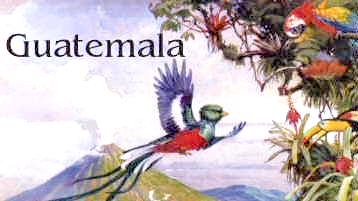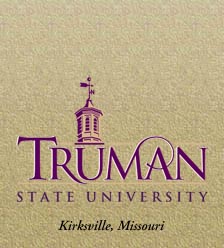Welcome to Truman State's Guatemalan
Revolution Resource Site!
Here you will find a brief history of the Revolution as well as a number
of links with commentary concerning Guatemala and its turbulent revolutionary
history.
Historical Summary of the Revolutionary
Era
1944 to
1986
In 1944, Gen. Jorge
Ubico's dictatorship was overthrown by the "October Revolutionaries"--a group of
dissident military
officers,
students, and liberal professionals. A civilian president, Juan Jose Arevalo,
was elected in 1945 and held the
presidency until 1951. Social reforms initiated by Arevalo were
continued by his successor, Col. Jacobo Arbenz. Arbenz
permitted the communist Guatemalan Labor Party to
gain legal status in 1952. By the mid-point of Arbenz's term,
communists
controlled key
peasant organizations, labor unions, and the governing political party, holding
some key government positions.
Despite most Guatemalans' attachment to the original ideals of the 1944
uprising, some private sector leaders and the military
viewed Arbenz's policies as a menace. The army
refused to defend the Arbenz Government when a group led by Col.
Carlos
Castillo Armas
invaded the country from Honduras in 1954 and eventually took over the
government.
In response to
the increasingly autocratic rule of General Ydigoras Fuentes, who took power in
1958 following the murder of
Col. Castillo Armas, a group of junior military officers revolted in
1960. When they failed, several went into hiding and
established close ties with Cuba. This group became
the nucleus of the forces that were in armed insurrection against
the
government for the next
36 years.
Three principal
left-wing guerrilla groups--the Guerrilla Army of the Poor (EGP), the
Revolutionary Organization of Armed
People (ORPA), and the Rebel Armed Forces (FAR)--conducted economic
sabotage and targeted government installations
and members of government security forces in armed
attacks. These three organizations, plus a fourth--the outlawed
communist
party, known as
the PGT--combined to form the Guatemalan National Revolutionary Unity (URNG) in
1982. At the same
time,
extreme right-wing groups of self-appointed vigilantes, including the Secret
Anti-Communist Army (ESA) and the White
Hand, tortured and murdered students, professionals,
and peasants suspected of involvement in leftist activities.
Shortly after President Julio Cesar Mendez
Montenegro took office in 1966, the army launched a major
counterinsurgency
campaign
that largely broke up the guerrilla movement in the countryside. The guerrillas
then concentrated their attacks in
Guatemala City, where they assassinated many leading figures, including
U.S. Ambassador John Gordon Mein in 1968.
Between 1966 and 1982, there were a series of
military or military-dominated governments.
In March 1982, army troops commanded by junior
officers staged a coup to prevent the assumption of power by
former
Defense Minister Gen.
Anibal Guevara, whose electoral victory was marred by fraud. The coup leaders
asked Brig. Gen.
Efrain Jose
Rios Montt to negotiate the departure of presidential incumbent General Lucas
Garcia. Rios Montt had been the
candidate of the Christian Democratic Party in the 1974 presidential
elections and was also widely believed to have lost by
fraud. Rios Montt formed a three-member junta that
annulled the 1965 constitution, dissolved the Congress, suspended
political parties, and canceled the
election law. Shortly thereafter, Rios Montt assumed the title of President of
the Republic.
Responding to
a wave of violence, the government imposed a state of siege, while at the same
time forming an advisory Council
of State to guide a return to democracy. In 1983, electoral laws were
promulgated, the state of siege was lifted, political activity
was once again allowed, and constituent
assembly elections scheduled.
Guerrilla forces and their leftist allies then denounced the new
government and stepped up attacks. Rios Montt sought to
combat the threat with military actions and economic
reforms, in his words, "rifles and beans." The government formed
civilian
defense forces
which, along with the army, successfully contained the insurgency. However, on
August 8, 1983, Rios Montt
was deposed by the Guatemalan army, and Minister of Defense, Gen. Oscar
Humberto Mejia Victores, was proclaimed head
of state. General Mejia claimed that certain
"religious fanatics" were abusing their positions in the government and
that
corruption had to be
weeded out. Constituent assembly elections were held on July 1,
1984.
On May 30, 1985, after
nine months of debate, the constituent assembly finished drafting a new
constitution, which took
immediate effect. Mejia called general elections. The Christian
Democratic Party (DCG) candidate, Vinicio Cerezo, won the
presidency with almost 70% of the vote and
took office in January 1986.
http://www.state.gov/www/background_notes/guatemala_0398_bgn.html

![[Country map of Guatemala]](index_files/gt-map.jpg)


![[...looking at a *photo* album?]](index_files/koosa.gif)
![[Invitation for my dissertation defense party]](index_files/lora.gif)